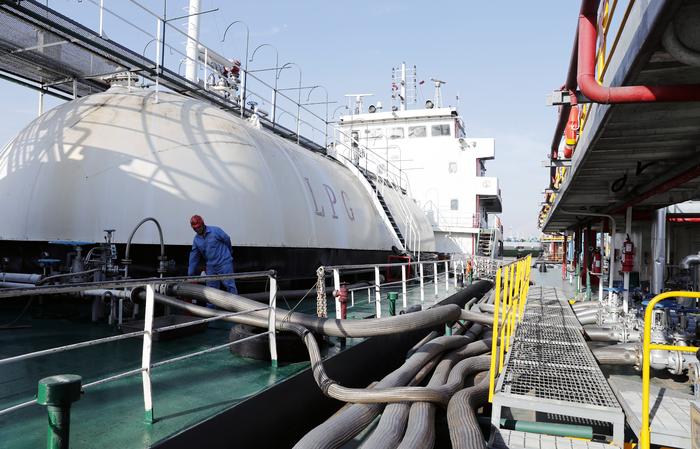|
| 2019-11-21 来源: 中国石化新闻网 |
| 石化新闻 |
|
中国石化新闻网讯 据钻机地带网11月19日消息称,过去一个月来,三大石油预测机构对明年库存水平变化的看法出现了分歧,其中两家机构对生产商的展望略有好转。 国际能源署、美国能源信息署和欧佩克都认为,如果欧佩克+产油国继续像过去那样开采石油,全球石油库存将在2020年上半年增加,但是EIA和OPEC都下调了增加规模的预测。他们对2020年下半年的预测也变得更加乐观。 这三家机构认为石油库存量在2020年全年仍将增长,但是OPEC认为库存量可以忽略不计,每天仅6万桶,而EIA看到的库存量已从上月的34万桶削减至30万桶。 这些数字是基于欧佩克国家继续以10月份的水平生产石油的基础上得出的,但国际能源署除外,该机构上月将沙特的石油产量定为每日1020万桶。 IEA和EIA都继续抑制对2019年石油需求增长的预测,而欧佩克的预测则朝着相反的方向发展。从年度平均水平来看,变化相对较小,IEA将其全年预测下调了2万桶,至每日98万桶,而EIA的下调幅度更大,为每日8万桶,至76万桶。 IEA对今年第三季度的需求增长做出了重大调整,将需求增幅从上个月的每日126万桶下调至109万桶。这与前几个季度的情况类似,在前几个季度,随着实际数据开始显现,相对强劲的初步预测被大幅下调。EIA在8月和9月的数据中对其第三季度的评估做出了类似的下调,将日增幅降至84万桶,这意味着IEA可能还需要进一步下调。 现在,年平均需求增长数据完全由第四季度支撑起来,IEA预计第四季度的需求仍将增长188万桶/天,EIA预计为134万桶/天,欧佩克为131万桶/天。 2020年的需求增长前景比今年要好。IEA预计其需求将稳定在124万桶,EIA为134万桶,欧佩克为108万桶。这三家机构的石油需求预测均较7月份略有下降,但降幅都不超过每天10万桶。 IEA预测,到2020年,由于年初开始要求船舶使用低硫燃料,汽油/柴油的需求量每天将猛增105万桶,剩余燃料油使用量也将相应减少69万桶。与燃料油相比,汽油的比重较低,这意味着需要更大量的汽油来提供相同数量的能源,从而一次性推动了燃料转换的需求。 IEA称,到2020年,全球石油需求将减少近40万桶。国际能源署的需求预测已经包括了这一影响,因此,任何减轻关税负担的举措,都可能提振2020年的石油消费,并为石油生产商带来更积极的前景。 曹海斌 摘译自 钻机地带网 原文如下: Big Data in Oil Market Gets More Positive for Producers The views of the three big oil forecasting agencies on changes in inventory levels next year have diverged over the past month, as the outlook from two of them becomes slightly more positive for producers. The International Energy Agency, the U.S. Energy Information Administration and the Organization of Petroleum Exporting Countries all still see global oil inventories building in the first half of 2020, if OPEC+ producers continue pumping as they have been, but the EIA and OPEC have both cut the size of the build. They have also become a little more positive for the second half of 2020. All three still see inventories growing over 2020 as a whole, but the build seen by OPEC is now negligible, at just 60,000 barrels a day, while that seen by the EIA has been trimmed to 300,000 barrels from last month’s 340,000 barrels. These numbers are based on OPEC countries continuing to pump at October’s level, except in the case of the IEA, which pegged Saudi output at 10.2 million barrels a day last month. The IEA and EIA have both continued to curb their oil demand growth forecasts for 2019, while OPEC’s outlook has moved in the opposite direction. On an annual average basis the changes are relatively small — the IEA has trimmed its full-year forecast by 20,000 barrels a day to 980,000, while the EIA has made a bigger reduction of 80,000 barrels a day to 760,000. The big revision by the IEA is to its assessment for the third quarter of this year, where it has cut demand growth to 1.09 million barrels a day from last month’s 1.26 million. This repeats the pattern seen in previous quarters, where relatively strong initial forecasts were cut significantly as real data began to emerge. The EIA made a similar cut to its third-quarter assessment in data for August and September, reducing growth to 840,000 barrels a day, which suggests that the IEA may have further to go with its own reduction. The annual average demand growth numbers are now being propped up entirely by the fourth quarter, where the IEA still sees 1.88 million barrels a day of growth, the EIA has 1.34 million and OPEC 1.31 million. The demand growth outlook for 2020 is holding up better than that for the current year. The IEA sees it steady at 1.24 million barrels a day, the EIA at 1.34 million and OPEC at a more modest 1.08 million. All three are down slightly from where they were in July, but not by more than 100,000 barrels a day. The IEA sees gasoil/diesel demand jumping by 1.05 million barrels a day in 2020, with a corresponding drop in residual fuel oil use of 690,000 barrels, driven by the requirement for ships to burn low-sulfur fuel from the beginning of the year. The lower specific gravity of gasoil relative to that of fuel oil means that a greater volume of the fuel is needed to provide the same amount of energy, giving a one-off boost to demand from the fuel switch. Global oil demand will be almost 400,000 barrels lower in 2020,according to the IEA. This impact is already included in the IEA’s demand projections, so any easing of the tariff burden could provide a boost to oil consumption in 2020 and a more positive outlook for oil producers.
|








